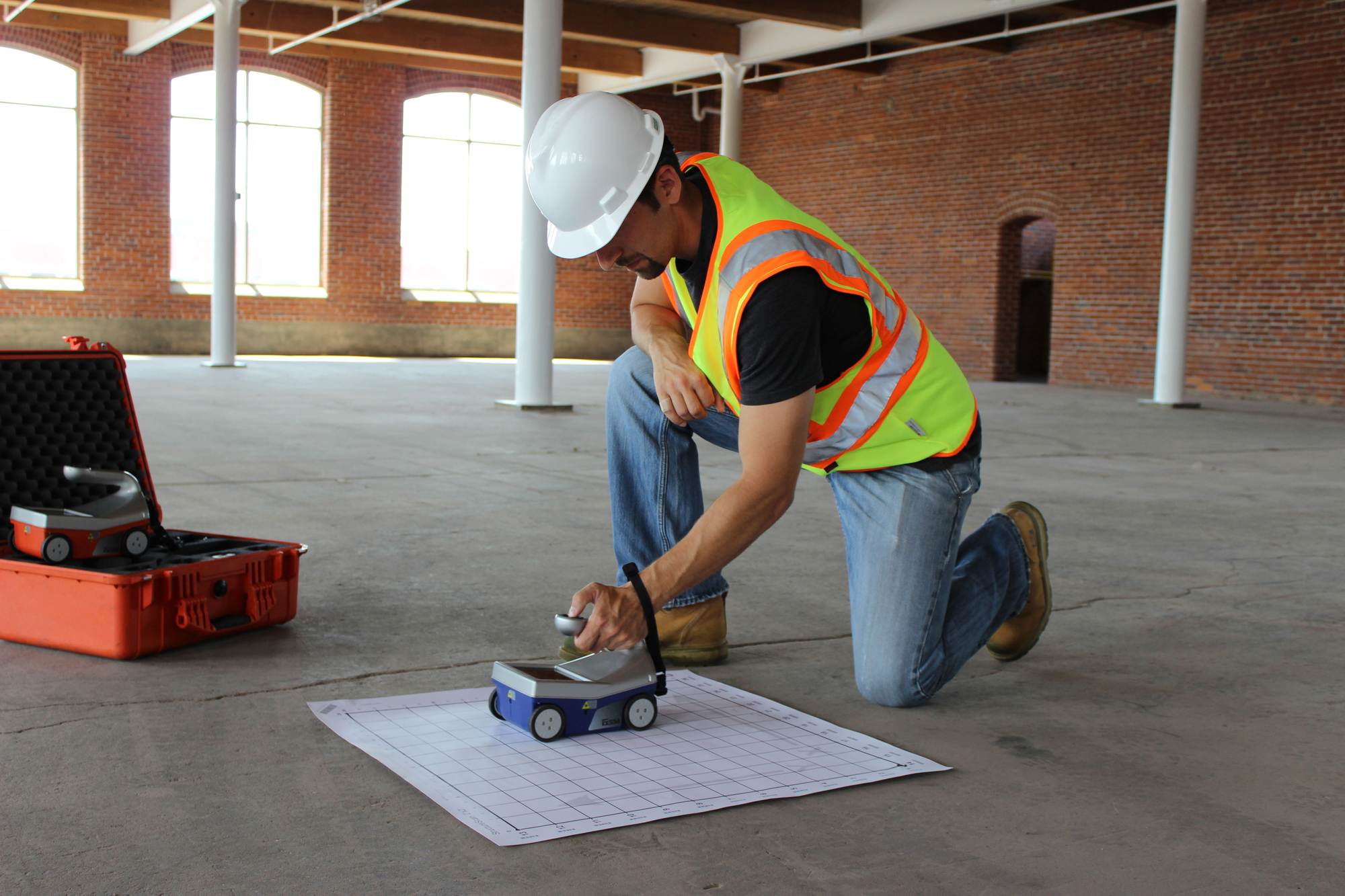RainierGPR Service Areas: Comprehensive Insurance Coverage for Concrete Scanning
RainierGPR Service Areas: Comprehensive Insurance Coverage for Concrete Scanning
Blog Article
Concrete Scanning: A Crucial Action In The Direction Of Making Sure Architectural Honesty and Safety
In the world of construction and facilities upkeep, the value of concrete scanning can not be overemphasized. This thorough procedure holds the key to revealing potential risks hidden below the surface of seemingly solid frameworks. By using advanced innovation and techniques, concrete scanning offers as a crucial device in guaranteeing that the integrity and security of structures and bridges are upheld to the highest standards. However, beyond its surface-level effects, the function of concrete scanning expands much deeper than meets the eye.
Importance of Concrete Scanning
Concrete scanning plays a vital function in ensuring the architectural stability and safety of buildings and framework tasks. By making use of sophisticated modern technologies such as ground-penetrating radar (GPR) and electromagnetic induction, professionals can non-destructively evaluate concrete structures to identify prospective issues, spaces, ingrained objects, and reinforcement format. This process enables early discovery of anomalies that might jeopardize the stability of a framework, avoiding pricey problems and making certain the safety of passengers.
Prior to exploration, reducing, or coring into concrete, scanning aids identify the precise areas of rebar, post-tension wires, and various other embedded components, lowering the danger of unintended hits that can lead to architectural weak points. Furthermore, concrete scanning aids in top quality control by verifying the thickness of concrete covers and discovering any disparities that may affect the total longevity of the structure.
Technology for Concrete Inspection

Benefits of Very Early Discovery
Prompt detection of structural concerns can significantly reduce dangers and ensure the durability of building and construction jobs. By determining possible troubles at an early stage in the building procedure, stakeholders can take proactive measures to deal with problems prior to they escalate into larger and much more expensive issues. One of the crucial advantages of early detection is the prevention of architectural failures, which can position major security dangers next and result in job hold-ups and monetary losses.
Furthermore, very early discovery allows for timely repairs and maintenance, which can assist expand the life-span of the framework. By addressing issues quickly, building and construction groups can prevent expensive repairs or even the requirement for premature replacement of architectural parts. This positive approach not just saves time and cash however likewise enhances the overall safety and security and sturdiness of the building and construction task.
In addition, very early detection can improve project planning and decision-making by giving stakeholders with useful insights right into the problem of the framework. Armed with this information, task managers can make informed choices pertaining to building and construction approaches, timelines, and products, leading to extra effective and successful task outcomes.
Making Certain Structural Stability
Ensuring the architectural security of a building and construction project is vital to its safety and security and durability. Concrete scanning plays an essential function in making sure architectural security by spotting prospective problems such as gaps, delamination, or support deterioration that might jeopardize the integrity of the framework over time.
By utilizing innovative scanning technologies like ground-penetrating radar (GPR) and electro-magnetic induction, building and construction specialists can non-invasively evaluate concrete frameworks to identify locations of concern beneath the surface. This proactive strategy enables the very early discovery of weak points or issues, making it possible for punctual repair services or reinforcement to stop structural failings.
Routine concrete scanning during different construction phases and throughout the life cycle of a structure can aid keep its stability, minimize risks, and guarantee the safety and security of residents. By prioritizing architectural stability great post to read through concrete scanning, building and construction tasks can boost their durability and sturdiness, ultimately adding to better safety and durability.

Avoiding Vital Failures
To guard versus disastrous occasions, careful monitoring and positive upkeep are imperative in preventing important failings within structural structures. Discovering potential issues before they intensify is crucial to avoiding architectural failings. Executing routine examinations, such as concrete scanning, can expose surprise flaws like gaps, fractures, or corrosion that can compromise the stability of a structure. By making use of innovative scanning technologies like Ground Passing through Radar (GPR) or Concrete X-ray, engineers can non-destructively analyze the condition of concrete and determine powerlessness that need reinforcement or repair service - RainierGPR Service Areas.

Final Thought
In final thought, concrete scanning plays an essential duty in making certain architectural integrity and security by utilizing sophisticated technology for early discovery of possible issues. This aggressive approach assists protect against essential failures and makes certain the security of frameworks. It is important to prioritize concrete assessment as a basic technique to shield the longevity and safety of buildings and infrastructure.
Concrete scanning plays an essential duty in making certain the architectural honesty and security of structures and facilities projects. In addition, concrete scanning help in quality control by verifying the thickness of concrete covers and detecting any kind of disparities that might impact the general resilience of the structure. Concrete scanning plays an important role in guaranteeing structural security by identifying possible problems such as gaps, delamination, or support rust that might jeopardize the integrity of the framework over time.

In verdict, concrete scanning plays a vital function in making certain architectural integrity and security by using innovative modern technology for very early discovery of prospective important site problems.
Report this page